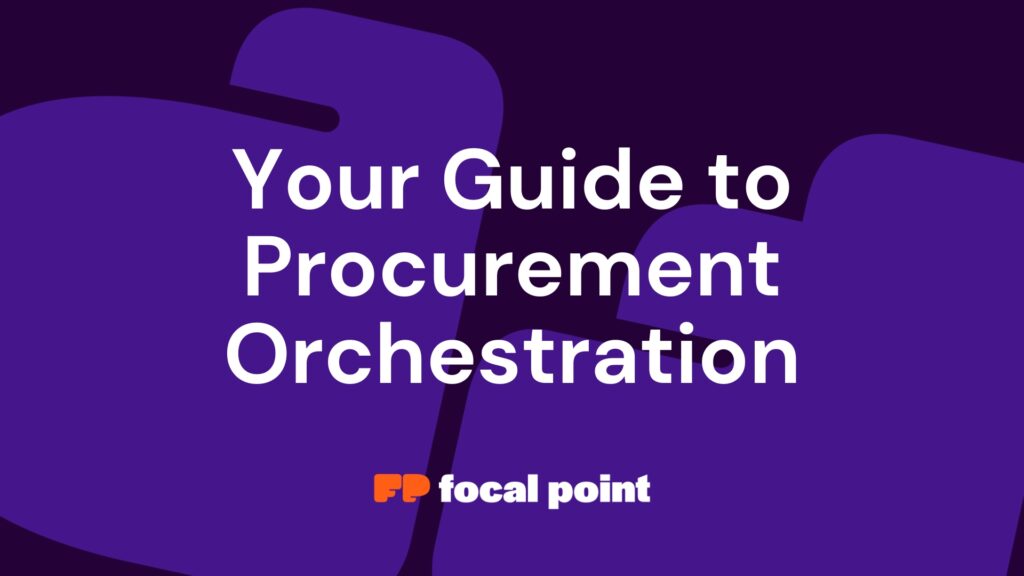Unlocking Efficiency and Savings with Procurement Orchestration
In the ongoing effort to gain better visibility to procurement work activity, streamline departmental collaboration and influence more spend, procurement orchestration has emerged as a consistent and reliable way to maximize organizational efficiency. Companies that embrace predictive procurement orchestration derive substantial value, often as much as 10 times ROI.
While the vast majority of procurement teams rely on KPI reporting to track against their objectives, the reality is that meeting goals is often time-consuming and largely retrospective and wrought with fire drills. Additionally, today’s procurement organizations rely on and leverage no less than a dozen systems to cobble together required data to execute their work. The current state of executing on project work within today’s world is largely manual, relying on the MS office suite and dabbling in one-off point solutions in an effort to cobble together tools to promote efficiency. The result? Pinball Procurement. Below are a handful of realities procurement teams may be facing;
-
- Bottlenecks
-
- Swivel Chair data capture
-
- Bouncing around
-
- Chasing + syncing
-
- Project diversions and delays
-
- System switching
-
- Data silos
-
- No real view into all the work being done
What’s interesting is that procurement teams in most cases are still meeting the goals placed upon them by leadership! So why change? Change is what drives excellence and excellence is what drives procurement leadership. Procurement becomes the roadmap for early awareness, allaying risk, defining strategic pathways and affecting change.
Done well, procurement orchestration elevates procurement from a transactional department into a team of strategic, value-added partners within the organization. In addition, procurement customers are the beneficiary of having full visibility to when their requests will be completed and their happiness matters profoundly.
Always looking backward, it is difficult to drive meaningful change and it hinders procurement’s ability to step up as a major strategic player within the business. At its core, procurement orchestration is the linchpin that transforms Key Performance Indicator (KPI) reports into actionable strategies.
Procurement teams perennially grapple with the pressure to deliver tangible savings, regardless of economic conditions or having to traverse major global events. This was evidenced during the COVID-19 pandemic which exposed the complexities and vulnerabilities of suppliers and supply chains. Enter procurement orchestration: a revolutionary concept in the world of procurement. But what exactly is procurement orchestration, and why is it gaining significance?
Defining Procurement Orchestration
Procurement Orchestration is the method of automating any activity that procurement needs to take action on. It’s looking at both planned and unplanned work activity and determining a streamlined path to completion eliminating collaborative friction between stakeholders, departments and technology. An example of unplanned work would be routing a request to a specific buying channel that P2P just doesn’t support, or directing a request to legal or finance. Or solving pesky non-catalog buy requests that procurement needs to act on. Contrarily, planned work includes things like contract renewals, category tendering and supplier updates.
Proper procurement orchestration – which supports both planned and unplanned work – includes:
-
- Request Intake
-
- Resource Allocation
-
- Smart Routing
-
- Workflow
-
- Advance Project Management
-
- Opportunity Management
-
- Category Strategy
-
- Benefits Management
-
- API integration to existing systems
-
- API integration to third-par
With truly enabled Procurement Orchestration, literally any work activity done within procurement can be automated. Activity types can align to a predetermined project workflow, approval process and part of collaborative project management with the ability to track financial or non-financial benefits to real-time reporting. Plus, the right Procurement Orchestration tool provides automatic process artifacts – making sure no efforts go unnoticed.
Forward-thinking businesses are deploying this functionality in order to gain control of all activity within procurement in effort to gain resource performance efficiencies, influence over more spend, better net promoter scores, reduce project cycle times and automate benefits tracking. What’s even more valuable is making the project record the central point of focus for project work execution. By API integrating essential data into the project record it becomes the cockpit of decisioning eliminating the need to bounce from system to system for information and swivel chair for updates. What happens when planned and unplanned work is managed as a part of procurement orchestration is knowing:
-
- What’s being worked on
-
- Who’s working on what
-
- When it will be completed
-
- Where is work in flight
-
- Why are there bottlenecks
Imagine procurement orchestration as a powerful lighthouse guiding teams through a dark night, as opposed to the traditional, fragmented and archaic manual methods akin to wandering in the dark.
Another way to view procurement orchestration approvers is as a collaboration layer for your procurement technology stack. Regardless of your current procurement technology suite, procurement orchestration wraps around existing departmental technology to consolidate departmental intake requests and organize collaborative approvals to get to a faster and more auditable outcome. Procurement Orchestration solutions unite an otherwise complex technological landscape, offering stakeholders a clear and centralized procurement hub.
Procurement orchestration replaces multiple fragmented solutions, the previous standard, by introducing a collaborative layer that both enhances efficiency and fosters greater transparency.
Challenges and Solutions
Introducing procurement orchestration into an organization isn’t without its challenges. Legacy tools can be deeply ingrained in both the existing workflow and culture. While resistance to change can hinder the adoption process, the benefits are significant enough to push through the discomfort.
Automating workflows and internal processes both streamline operations and reduce the burden of manual tasks. Procurement orchestration can integrate with existing systems to bridge the technological gaps, providing a seamless overall experience. Robust reporting and analytics offer incomparable insight, enabling better control over procurement workflows. This “single front door” approach to intake simplifies the user experience, reducing reliance on manual queries and eliminating the lack of oversight from using email and other traditional communication methods. While driving planned work out an opportunity pipeline assures you’re prioritizing the valuable work to deliver the value executive leadership looks to from procurement.
There are numerous advantages to procurement orchestration, including improved KPIs, reduced technological inertia, and cost savings through streamlined processes and real-time decision-making—all of which contribute to a stronger execution of procurement initiatives.
Future Trends in Sourcing and Procurement Orchestration
Looking ahead, the procurement landscape is poised for change. While supplier relationships will remain crucial as digital transformation accelerates, the rise of remote work will drive the adoption of cloud-based procurement solutions. Businesses will continue to seek efficiencies amid economic challenges—and that begins with internal consolidation.
Harnessing the Power of Instant Forecasts
Real-time data is pivotal to procurement orchestration. It unlocks the potential of instant analysis, allowing businesses to catch outliers before they become problematic. Detailed data engagement empowers teams to act promptly and ensure savings targets are met.
Improving Purchase Orders with Procurement Orchestration
Purchase orders stand as a prime example of where procurement orchestration can shine. Exceptions are flagged during the quoting stage, giving procurement teams the necessary information and visibility to make strategic decisions. Open procurement systems allow approved suppliers to be included in the process, fostering competition and driving value.
Procurement orchestration is ultimately more than just a buzzword; it’s a transformative force in the procurement landscape. In embracing the opportunity to be at the forefront of this new era of procurement, businesses can streamline operations, unlock significant cost savings, and strategically elevate business objectives overall.



